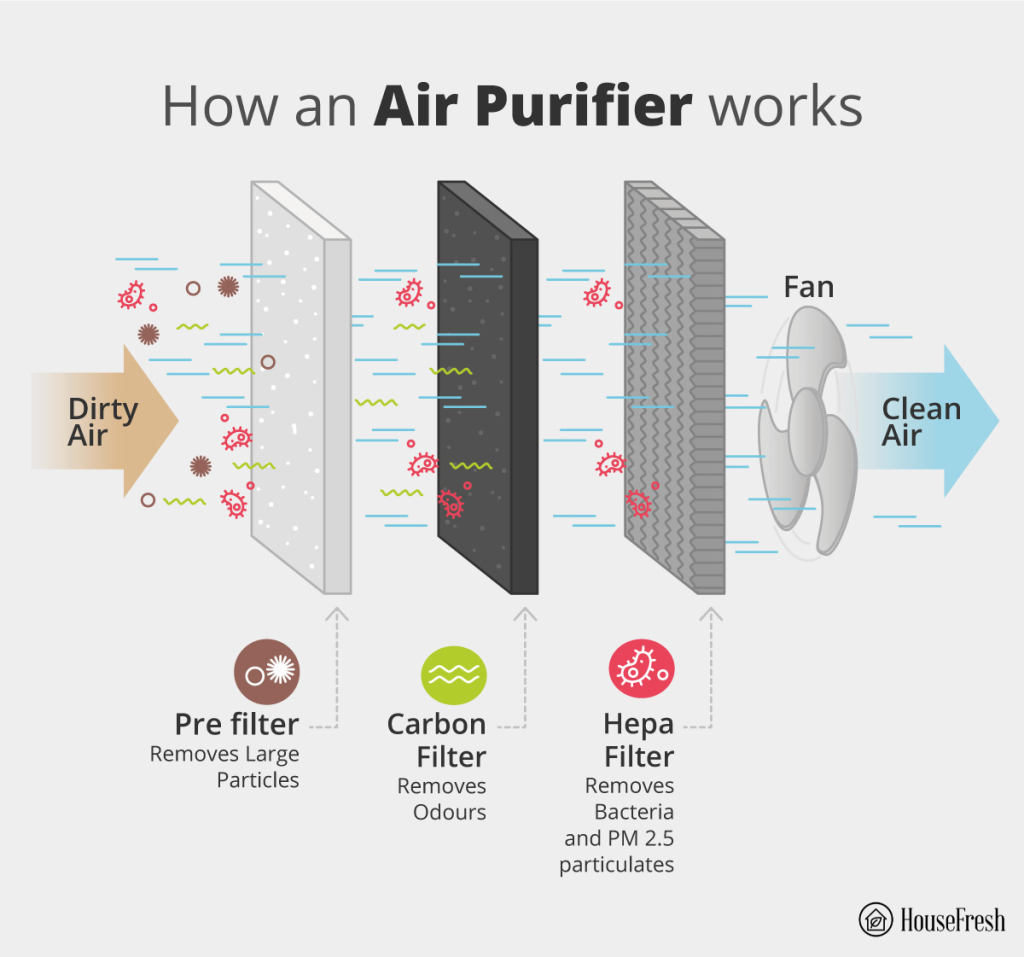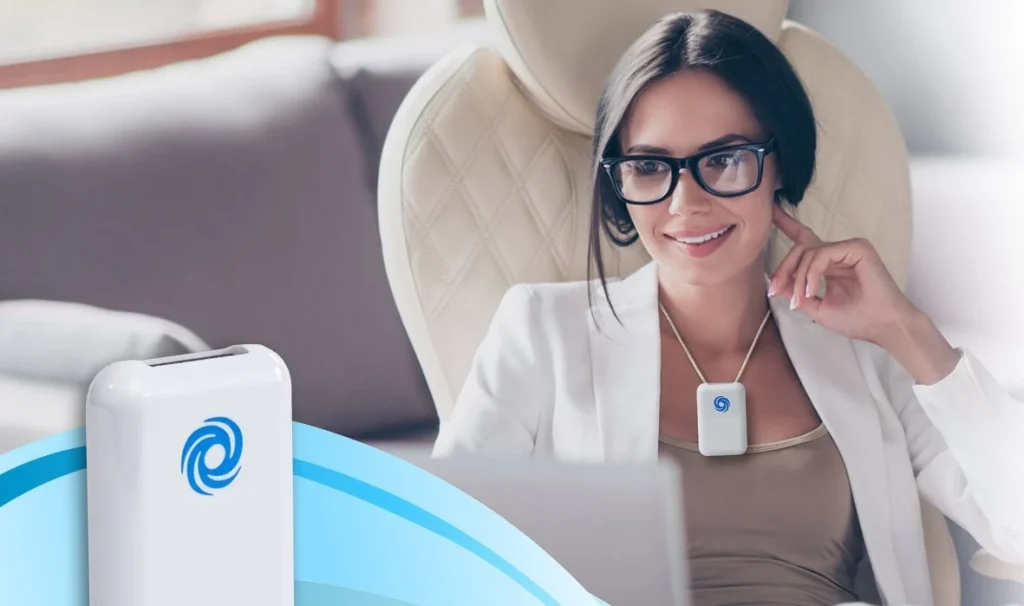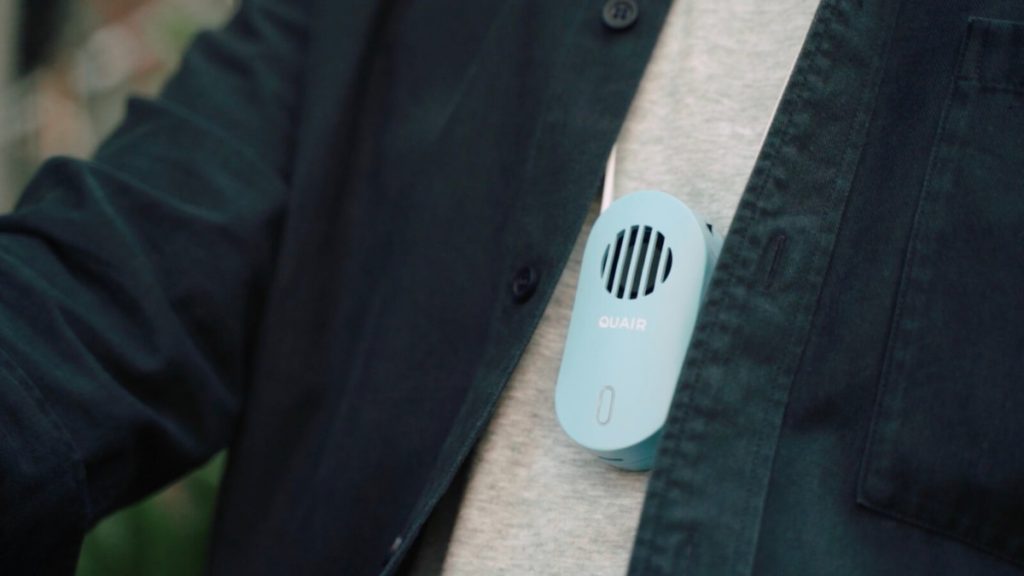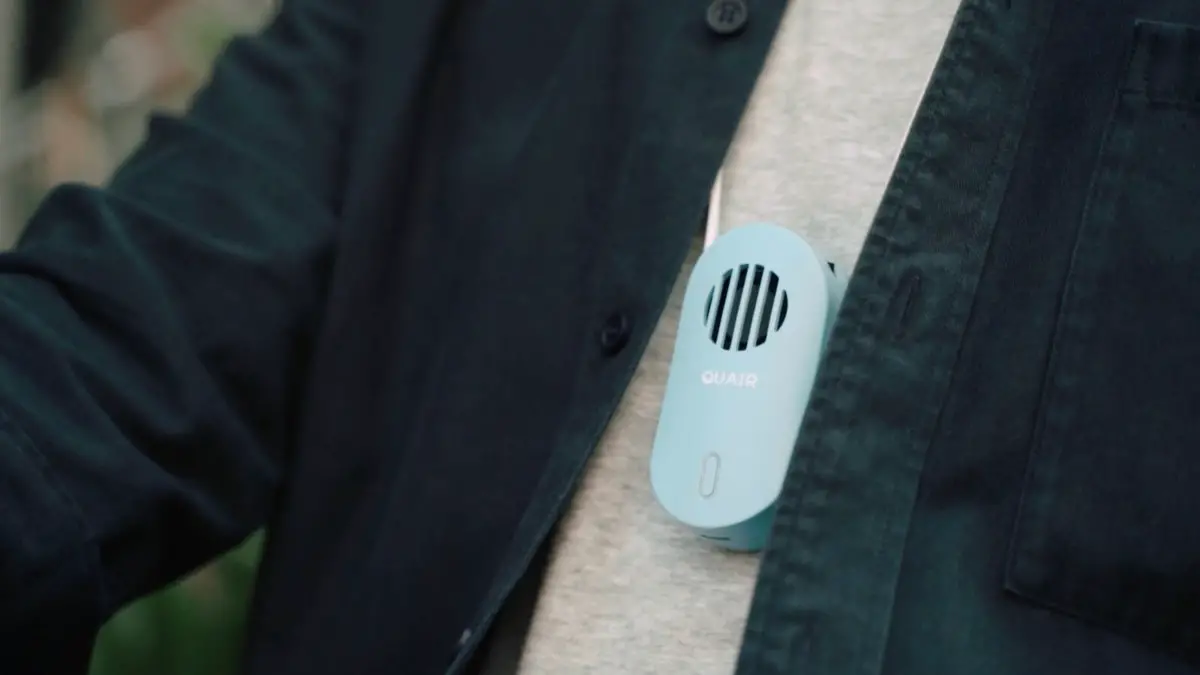Hey there, fellow breathers! Ever feel like the air around you could use a serious upgrade? Maybe you’re navigating crowded city streets here in Lagos, where the hustle and bustle sometimes brings with it unwelcome particles. Or perhaps you’re just generally concerned about the invisible stuff floating around that you end up inhaling. Well, you’re not alone!
In our quest for cleaner, healthier lives, a new gadget has emerged, promising a personal bubble of purified air: the wearable air purifier. Sounds pretty futuristic, right? Like something straight out of a sci-fi movie where everyone has their own personal force field against pollution. But the big question is… do these things actually work?
Let’s dive deep, shall we? We’ll explore what these devices are, how they claim to function, and most importantly, whether they live up to the hype. Get ready for a breath of fresh (and honest) air!
What Exactly Are These Wearable Air Purifiers Anyway?

Think of them as mini air purifiers that you can carry around with you. They come in various shapes and sizes, from necklace-like devices to mask-integrated systems. The core idea is the same: to filter the air in your immediate breathing zone.
Most wearable air purifiers employ a small fan to draw air in through a filter. This filter is designed to trap airborne particles like dust, pollen, pet dander, and even some pollutants. The supposedly cleaner air is then expelled towards your face, aiming to provide you with a personal pocket of purified air.
The Science-y Stuff: How Do They Claim to Work?
The technology behind these devices often involves High-Efficiency Particulate Air (HEPA) filters or similar filtration systems. You’ve probably heard of HEPA filters in larger home air purifiers. They’re pretty good at capturing tiny particles – we’re talking stuff as small as 0.3 microns!
Some wearable purifiers might also incorporate activated carbon filters to tackle odours and certain gases.5Others might use ionization technology, which releases electrically charged ions that attach to airborne particles, theoretically making them heavier and causing them to fall out of your breathing zone.
The Million-Dollar Question: Do They Really Deliver?
Okay, let’s get down to brass tacks. Do these wearable gadgets actually make a significant difference in the air you breathe? The answer, unfortunately, isn’t a simple yes or no. It’s more of a “it depends,” with a healthy dose of skepticism sprinkled in.

The Challenges They Face
- Limited Filtration Capacity: These are small devices with correspondingly small filters.7Compared to a room-sized air purifier, their capacity to clean a significant volume of air is limited.8 Think of it like trying to empty a swimming pool with a teacup – it’ll take a while, and you might not see much of a difference.
- Leakage and Airflow Dynamics: The effectiveness of a filter depends on all the air you breathe passing through it. With wearable devices, there’s often significant leakage around the edges. Polluted air can easily bypass the filter and still end up in your lungs. The direction and speed of the expelled clean air also play a crucial role, and it’s challenging to ensure it consistently reaches your breathing zone without being dispersed by environmental factors like wind.
- Particle Size Matters: While HEPA filters can capture very small particles, some ultrafine particles and gases might still slip through depending on the filter quality and the device’s efficiency.
- Maintenance and Filter Replacement: Like any air purifier, wearable ones require regular filter replacement. If users don’t adhere to the maintenance schedule, the device’s effectiveness will significantly decrease. And let’s be honest, remembering to change a tiny filter in a wearable gadget might not be at the top of everyone’s to-do list.
- Battery Life and Convenience: Some wearable purifiers can be bulky or have limited battery life, making them less practical for everyday use. If the battery dies halfway through your commute in heavy traffic, the air purifier becomes just another piece of jewelry.
Smart Home Automation for Renters: No Drilling or Permanent Changes Required
Potential Limited Benefits

Despite the challenges, there might be some limited scenarios where wearable air purifiers could offer a small degree of benefit:
- Localized Exposure: In very specific, localized situations with a known source of larger particles (like someone sweeping nearby kicking up dust), a wearable purifier might capture some of those larger irritants before you inhale them.
- Personal Perception: Some users might feel a difference, even if the actual reduction in harmful particles is minimal. This placebo effect shouldn’t be entirely dismissed, as feeling more in control of your environment can have psychological benefits.
- Mask-Integrated Systems: Wearable purifiers integrated into well-fitting masks might offer a more controlled airflow and better filtration compared to necklace-style devices. However, the mask itself is doing a significant portion of the filtration work in these cases.
Don’t Fall for the Marketing Hype!
The marketing around wearable air purifiers often paints a picture of a personal clean air sanctuary. While the idea is appealing, it’s crucial to approach these claims with a critical eye. Words like “revolutionary,” “ultimate protection,” and “breathe pure air anytime, anywhere” should raise a red flag.
Think about it: if a small, battery-powered device hanging around your neck could truly create a bubble of perfectly clean air in a polluted environment, wouldn’t we all be wearing them? The reality is that the physics and engineering challenges involved in achieving this on a personal, portable scale are significant.
What Are the Experts Saying?
Many environmental health experts and air quality scientists remain skeptical about the real-world effectiveness of most wearable air purifiers. Studies on these devices are often limited, and the results are generally not conclusive enough to recommend them as a reliable solution for air pollution.
The consensus tends to be that while the technology might have potential in very specific applications or with significant advancements, current wearable air purifiers are unlikely to provide substantial protection against the wide range of airborne pollutants we encounter daily.
So, What’s the Verdict?
As it stands, the evidence supporting the widespread effectiveness of wearable air purifiers is weak. While they might offer a marginal benefit in very specific situations or appeal to those seeking a sense of control, they are not a substitute for addressing the root causes of air pollution or using proven methods like high-quality masks (especially N95 or FFP2/FFP3 rated) in highly polluted environments.
Think of wearable air purifiers more like a trendy gadget with a promising concept rather than a scientifically proven solution for breathing cleaner air. Your money might be better spent on investing in a good quality home air purifier or advocating for policies that improve overall air quality in your community.
Making Informed Choices for Your Health
Ultimately, the decision of whether or not to use a wearable air purifier is a personal one. However, it’s crucial to base that decision on realistic expectations and a clear understanding of the limitations of these devices. Don’t let slick marketing sway you into believing they offer a foolproof solution to air pollution.
Focus on what we know works:
- Avoidance: When air quality is poor, limit your time outdoors or in heavily polluted areas.
- Ventilation: Ensure good ventilation in your home and workplace by opening windows when air quality allows.
- High-Quality Masks: In high-pollution situations, a properly fitted N95 or equivalent mask can offer significant protection.
- Home Air Purifiers: For indoor air quality, consider investing in a reputable room air purifier with a HEPA filter.
- Advocacy: Support initiatives and policies aimed at reducing air pollution at a broader level.
The Future of Wearable Air Purification
Could wearable air purifiers become more effective in the future? Perhaps. Advancements in filter technology, battery life, and airflow management might lead to more promising designs. However, we’re not quite there yet.
For now, approach wearable air purifiers with a healthy dose of skepticism and prioritize proven methods for protecting your respiratory health. Your lungs will thank you for it!
Unique FAQs About Wearable Air Purifiers
1. Are wearable air purifiers a good alternative to wearing a face mask for pollution protection?
Absolutely not. While some wearable air purifiers are integrated into masks, the necklace-style devices offer minimal protection compared to a well-fitted, high-quality mask like an N95 or FFP2/FFP3. These masks are designed to filter a significant percentage of airborne particles as you inhale directly through the filter material.11 Wearable air purifiers often suffer from leakage and inconsistent airflow, making them less reliable for serious pollution protection.
2. Can wearable air purifiers help with allergies like hay fever?
They might offer a very slight reduction in exposure to larger pollen particles in your immediate breathing zone. However, due to the leakage and limited filtration capacity, they are unlikely to provide significant relief from allergy symptoms compared to staying indoors with a good air purifier or using appropriate medication. Don’t ditch your antihistamines just yet!
3. Are there any health risks associated with using wearable air purifiers?
Some wearable air purifiers use ionization technology, which can produce ozone as a byproduct. Ozone is a lung irritant and can be harmful, especially for individuals with respiratory conditions. It’s essential to check if a device uses ionization and, if so, whether it meets safety standards for ozone emission. Additionally, the constant presence of a device near your face could potentially cause skin irritation for some individuals.
4. How often do the filters in wearable air purifiers need to be replaced, and how much do they cost?
Filter replacement frequency varies depending on the device and the level of air pollution you’re exposed to. It could range from a few weeks to several months. The cost of replacement filters can also vary significantly, adding to the overall expense of using a wearable air purifier. Failing to replace filters regularly will drastically reduce the device’s effectiveness.
5. If wearable air purifiers aren’t very effective, why are they so popular?
The popularity likely stems from a combination of factors: the appealing idea of a personal clean air solution, clever marketing that plays on people’s concerns about air quality, and the novelty factor of a wearable gadget. In a world increasingly concerned about pollution, the promise of instant personal protection is understandably attractive, even if the reality doesn’t quite live up to the hype.
